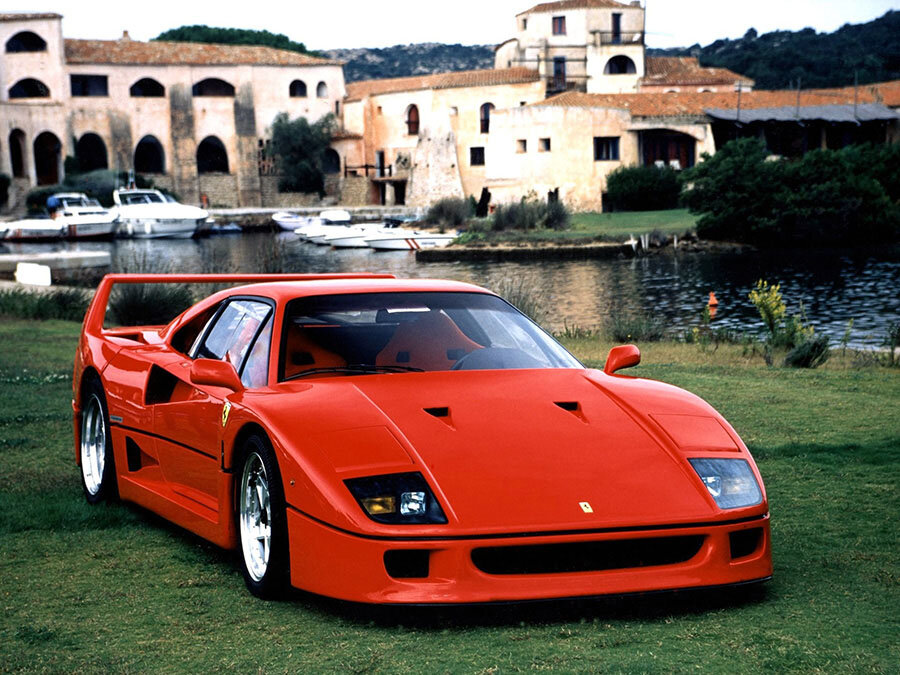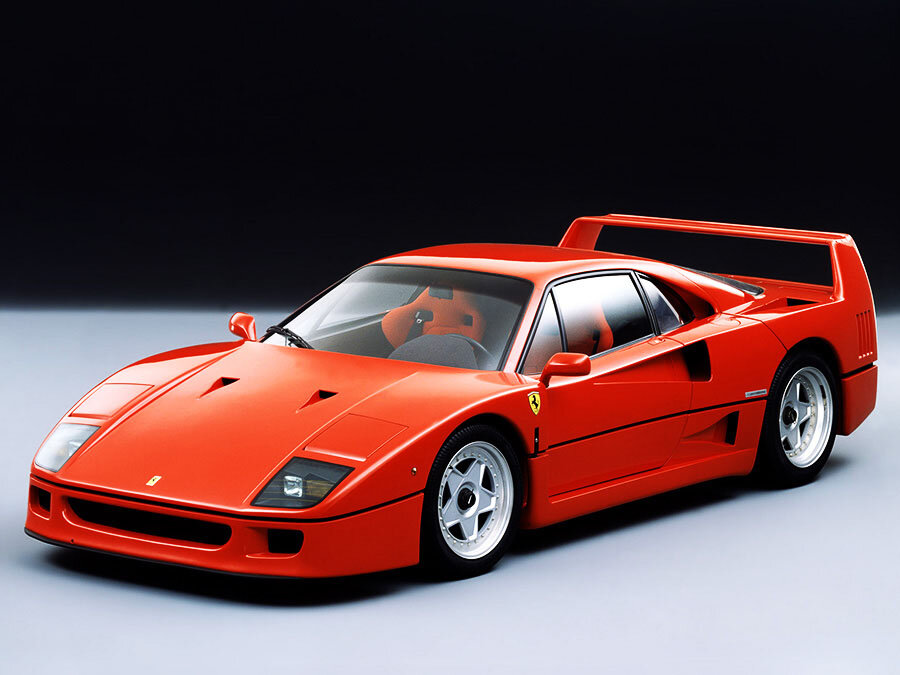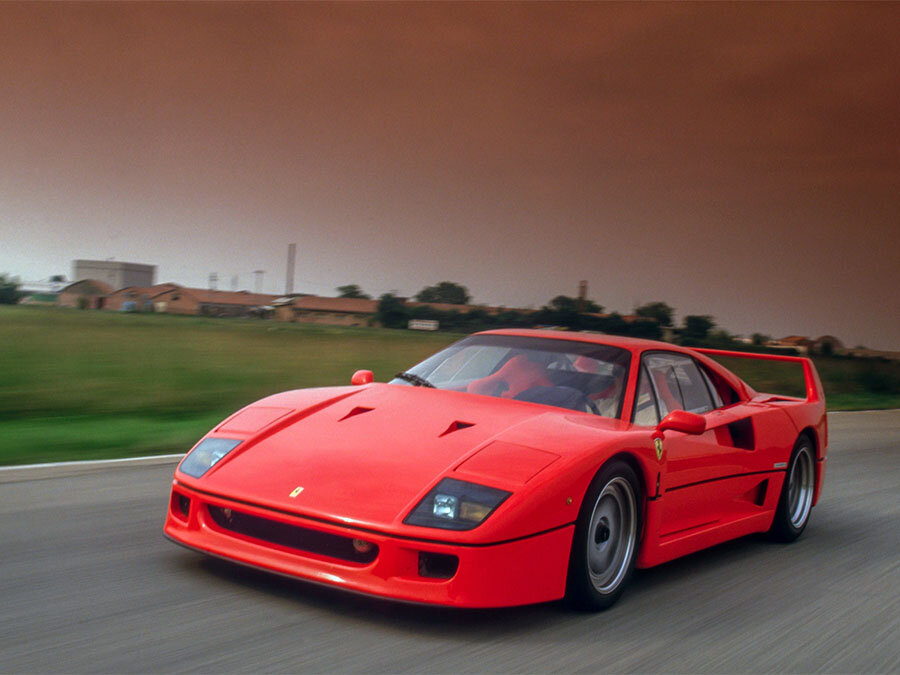Guide: Ferrari F40 - a Historical & Technical Appraisal
/BACKGROUND
Unfortunately, the Group B competition programme for which Ferrari conceived the 288 GTO never got off the ground.
A plentiful supply of much faster Group C machinery meant interest in Group B circuit racing was extremely subdued. Between 1982 and 1986, the category only managed to attract a handful of old Group 4 cars that had been re-homologated into the new class.
By contrast, Group B rallying proved enormously popular. A number of new manufacturers entered the sport and, for a brief time, rallying rivalled Formula 1 in terms of global popularity.
Any firm that wanted to participate in Group B had twelve months to produce 200 identical road versions of the vehicle they wanted to compete with. Once homologation was approved, they could build 20 uprated Evolution variants for competition use. Thereafter, additional batches of further modified Evolutions were permitted every twelve months.
Most manufacturers that built specialised Group B rally cars had great difficulty selling the road versions. Many sat unsold for years.
Ironically, the only two firms who had no trouble shifting their Group B road cars were Ferrari and Porsche who had designed their cars for circuit racing.
The resultant 288 GTO and 959 were heavily over-subscribed and both companies eventually produced more than the 200 units required for homologation.
The Ferrari 288 GTO and Porsche 959 were easily the most expensive models either firm offered for sale at the time.
They were also the fastest, most powerful and most technologically advanced.
Both cars proved there was a market for an exclusive new line of ultra high performance models priced well beyond existing product lines.
Ferrari were the first to capitalise. They took the GTO Evoluzione and switched it to become a prototype for a successor to the 288.
The resultant F40 was unveiled at a Maranello press conference in June 1987.
Fittingly, the F40 was the last car presented by Enzo Ferrari. It was unveiled 14 months before il Commendatore’s death.
Built to celebrate Ferrari’s 40th anniversary, the new model was more extreme than the GTO in every respect.
CHASSIS
The F40’s tubular steel chassis had an unchanged 2450mm wheelbase but was extensively reinforced with bonded carbonfibre inserts to create a central cell around the sills, floorpan, dash and front bulkhead.
Suspension was via unequal length wishbones with coil springs, Koni dampers and cast-alloy hub carriers. Anti-roll bars were installed at either end.
Located against the rear bulkhead were two rubber safety fuel cells, each of which had a ten-year lifespan. Overall capacity was 120 litres.
The 330mm ventilated disc brakes and four-piston calipers were supplied by Brembo.
17-inch diameter two-piece wheels came from Speedline and were originally shod with Pirelli P Zero tyres. The rims had a traditional five-spoke star pattern design. They measured 8-inches wide at the front and 10-inches wide at the back.
Compared to the 288, track was widened by 35mm front and 48mm rear.
ENGINE / TRANSMISSION
Once again, the mid-mounted engine was positioned longitudinally in the chassis. It was another dry-sumped twin turbocharged 90° V8.
Designated Tipo F120 A, the block and dual overhead camshaft four-valve heads were cast in lightweight alloy.
Whereas the GTO had to comply with Group B’s four-litre swept volume engine limit, the F40 was not restricted by competition regulations. Displacement was therefore taken from 2855cc to 2936cc. This was achieved by way of a bore increase (from 80mm to 81.9mm) and a shortened stroke (reduced from 71mm to 69.5mm).
The compression ratio was increased from 7.6:1 to 7.7:1.
Redesigned piston crowns improved gas flow.
Two water-cooled IHI turbochargers ran at 1.1 bar. Each had its own Behr intercooler.
Fuel feed was via Weber-Marelli IAW combined electronic injection/ignition.
Output rose from 400bhp to 478bhp at an unchanged 7000rpm. The torque rating was also improved: 426lb-ft at 5400rpm on the F40 compared to 366lb-ft at 3800rpm for the 288.
The GTO’s five-speed manual gearbox was retained, albeit with different ratios. Transmission was through a twin-plate clutch and limited-slip differential.
BODYWORK
Pininfarina received the commission to design the F40’s bodywork and did an outstanding job.
Only the cabin profile bore any resemblance to the GTO. Everything else was completely new.
To save weight, panels were a mix of Kevlar, carbonfibre and aluminium with polycarbonate used for the windshield and windows.
Single piece front and rear clams were hinged at either end.
NACA ducts were carved out from the front lid, down each flank and from the tops of the rear fenders. Additional intakes were positioned in the leading edge of the nose and behind the rear three-quarter windows.
Hot air was removed by large vertical vents behind each front wheel, a bank of four smaller vents behind each rear wheel and the heavily louvred rear windscreen. The tail fascia was given a full width mesh grille.
Downforce was increased by way of a small lip spoiler at the front, a huge fixed wing at the rear and a composite undertray.
Three central exhausts exited through the rear apron.
INTERIOR
The F40 cockpit was clearly derived from the GTO Evoluzione.
The dash, instrument binnacle, transmission tunnel and rear bulkhead were nearly identical and similarly came upholstered in anti-glare felt.
The only obvious differences saw the F40 equipped with rocker switches instead of toggles, new white on black Veglia gauges and a blank cover instead of an exposed fuseboard. It also came with a handsome new three-spoke leather-rimmed Momo steering wheel.
The main instrument binnacle was home to a large rev counter and speedometer plus smaller gauges for water temperature and turbo boost. Three additional read outs for oil pressure, oil temperature and fuel were located in the centre of the dash.
Early cars with sliding Plexiglas windows had no door trim. When Ferrari switched to wind down windows after the first 50 units, a simple carbonfibre door panel was employed. Neither version had any door release catch, just a simple pull cable.
Aside from red fire-retardant fabric for the single-piece Kevlar seats, there was no upholstery to speak of.
To save weight, most of the interior panels were left as exposed composite.
Three-point safety belts were fitted as standard and Sabelt harnesses were routinely installed as well.
A traditional open gate gearshift was employed and the aluminium pedals were drilled for lightness.
Although there was little in the way of luggage space and no proper boot, the absence of a spare wheel meant the cavity underneath the front lid could be used for storage.
OPTIONS
Few options were available.
Customers could add a non-synchromesh Sports gearbox and a three-piece set of Schedoni luggage.
Air-conditioning, electric windows, a radio and central locking were never fitted.
There was just one colour, Rosso Corsa, and the F40 only came in left-hand drive.
WEIGHT / PERFORMANCE
The extensive weight-saving programme resulted in a car that tipped the scales at 1202kg. For comparison, this was over 300kg lighter than a Testarossa.
The F40 became the first production car to top 200mph. Flat out it could do 201mph while 0-62mph took just 4.1 seconds.
PRODUCTION CHANGES
After the first 50 cars had been completed, Ferrari dropped the sliding Plexiglas windows in favour of conventional roll down glass.
In 1991, an adjustable suspension option was introduced that enabled the ride-height to be raised or lowered by 20mm.
Around the same time, a new Tipo F120 D engine was brought in that most notably featured catalytic converters. This motor had different timing for the intake valves to overcome the back pressure on the cats. It produced a little more power (484bhp) albeit at the expense of some torque (now 424lb-ft at 4500rpm as opposed to 426lb-ft at 4000rpm).
USA VERSION
1991 also saw Ferrari introduce a US-spec. F40.
In addition to the Tipo F120 D catalysed engine and taller gearbox ratios, it featured a host of extra safety equipment.
The rubber fuel tanks were switched to aluminium and submersible fuel pumps were installed.
The chassis was reinforced to include new bumper mountings and side protection bars.
Bigger front and rear bumpers were fitted along with a rubber chin spoiler that provided additional impact protection.
Rectangular side marker lights were added along with a high-level brake light.
The fog lights housed in the rear apron on regular F40s were deleted.
Inside, different seats were fitted along with a knee roll underneath the dash.
Also present was the peculiar Passive Restraint System with automatic safety belts as fitted to all US Ferraris of the era.
This extra equipment added 115kg.
Top speed dropped from 201mph to 194mph and the 0-62mph time increased from 4.1 to 4.8 seconds.
END OF PRODUCTION
F40 production was discontinued in 1992 after 1311 examples had been completed.
213 of these were US-specification derivatives.
F40 VALEO
One car (chassis 79883) was built in 1989 with a clutch-less manual Valeo gearbox for Fiat Chairman, Gianni Agnelli.
Agnelli had previously suffered a serious car accident and struggled to depress a heavy clutch.
Chassis 79883 was therefore equipped with a transmission that automatically engaged the clutch whenever the gear lever was moved.
F40 PININFARINA SPECIALE
A batch of around seven F40s were converted by Pininfarina to right-hand drive for the Sultan of Brunei.
At the time, the Brunei royal family were the most prolific buyers of high end cars on the planet.
Some of these F40s were equipped with leather interiors using dashboards and seats from the Testarossa.
Others were painted out of range colours such as grey, blue and yellow.
Text copyright: Supercar Nostalgia
Photo copyright: Ferrari - https://www.ferrari.com





































